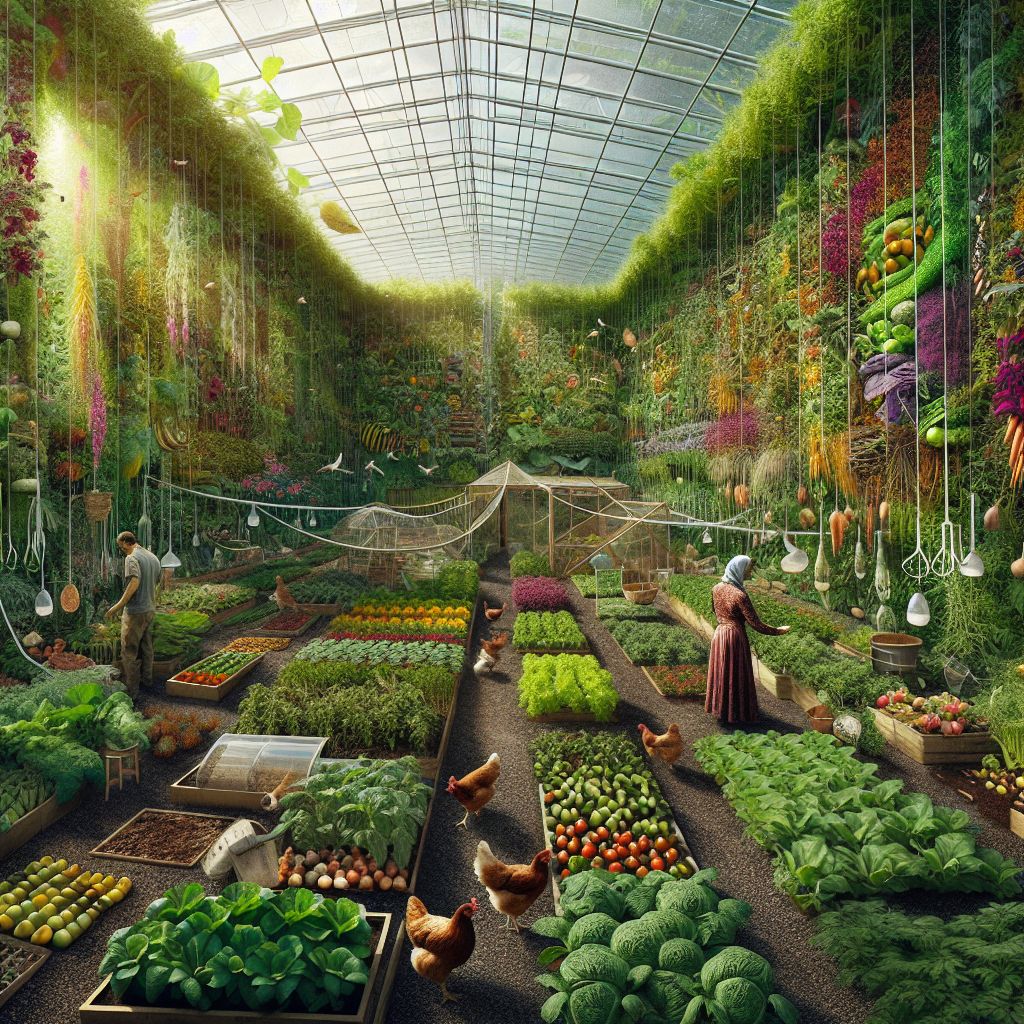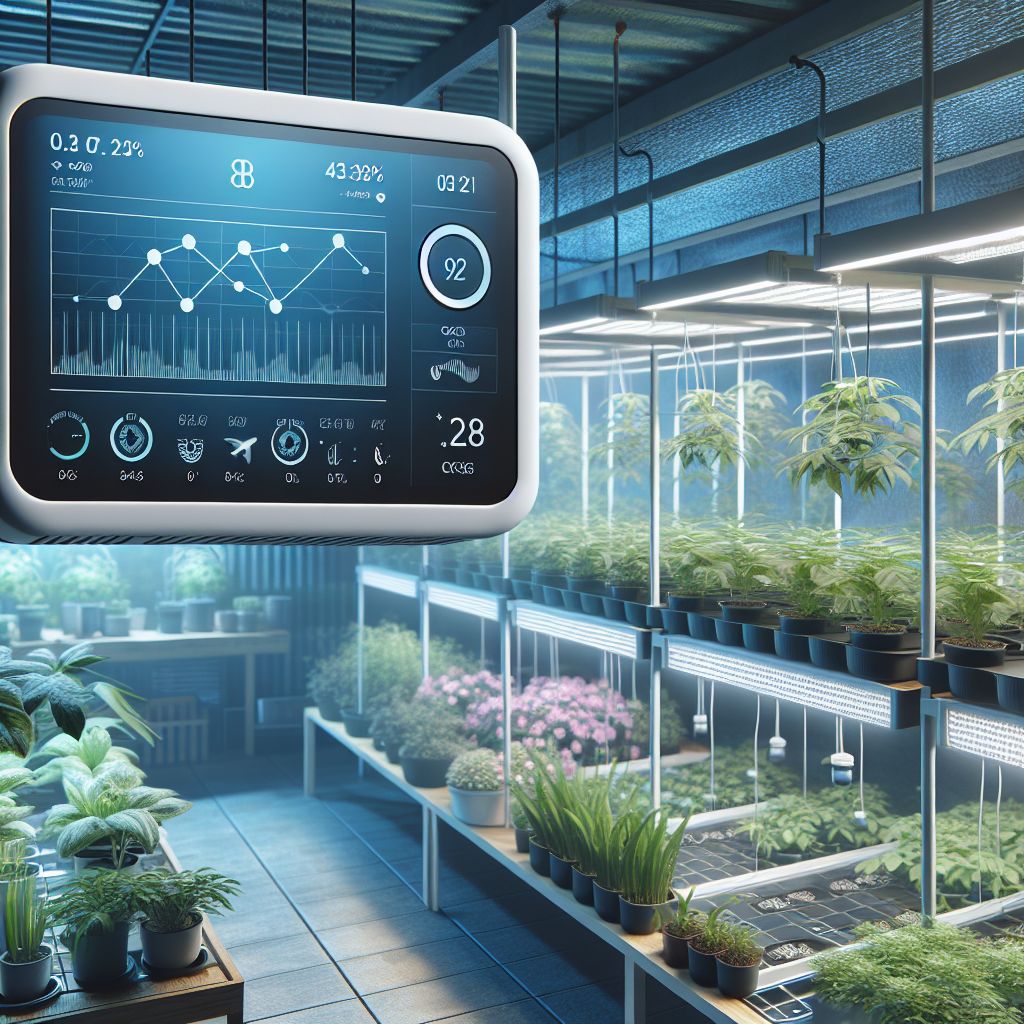Key Takeaways
- Raspberry Pi smart farming uses sensors and IoT technology to optimize agricultural practices.
- It’s cost-effective, with project setups ranging from minimal to extensive, depending on the application.
- Automated systems can be built to control irrigation, monitor climate conditions, and manage pests.
- Even those with little technical knowledge can implement Raspberry Pi solutions with clear guidance.
- Ultimately, this technology contributes to sustainable farming, reducing waste and enhancing productivity.
What is Raspberry Pi Smart Farming?
At its core, Raspberry Pi smart farming is about integrating technology into agricultural processes. It involves using the Raspberry Pi – a small, affordable computer – to collect data from various sensors across the farm. This data might include soil moisture levels, temperature, humidity, and even plant health. The Raspberry Pi processes this information and takes action or provides insights, such as when to water crops or alter greenhouse conditions for optimal plant growth.
The Heart of Modern Agriculture: Raspberry Pi
The Raspberry Pi is the brains behind many smart farming applications. Its flexibility, affordability, and power make it suitable for everything from basic data collection to controlling complex automated systems. It’s a game-changer for farmers who want to embrace technology without breaking the bank.
Why Raspberry Pi is Ideal for Farmers
For starters, the Raspberry Pi is compact, which means it doesn’t require much space and can be installed directly in the field or inside greenhouses. Its low power consumption is a boon for remote areas where electricity is scarce or expensive. Most importantly, it’s user-friendly. Even if you’re not a tech wizard, you can set up a Raspberry Pi with some basic guidance.
Key Features That Make Raspberry Pi Stand Out
- Cost-Effectiveness: The Raspberry Pi itself is inexpensive, and it can run open-source software which cuts down on costs.
- Flexibility: With a range of models and accessories, it can be tailored to various farming needs.
- Community Support: A vast community of users means plenty of shared knowledge and troubleshooting help.
Because of these features, Raspberry Pi stands out as an accessible entry point into smart farming for many agriculturalists around the world.
Let’s talk about how this technology is changing the agricultural landscape through innovative projects and applications.
“Raspberry Pi LAN – Wikimedia …” from commons.wikimedia.org
Revolutionizing Agriculture One Project at a Time
Smart farming projects powered by Raspberry Pi are sprouting up all over the globe. They’re not just for large-scale operations, even small family farms are seeing the benefits. These projects range from simple soil moisture sensors to comprehensive farm management systems.
Automated Irrigation Systems
One of the most common uses of Raspberry Pi in agriculture is for automated irrigation. These systems use soil moisture sensors to determine when crops need water. The Raspberry Pi processes this data and can automatically trigger irrigation systems, ensuring plants get the right amount of water at the right time. This not only saves water but also improves crop yields.
And setting up such a system is straightforward.
- Install soil moisture sensors in various locations around your farm.
- Connect these sensors to a Raspberry Pi.
- Program the Raspberry Pi to analyze the data and control water valves accordingly.
This simple setup can save hours of manual labor and significantly reduce water waste. Learn more about smart agriculture projects using Raspberry Pi.
Precision Agriculture with Drone Technology
Another exciting application is the use of drones equipped with cameras and sensors, all managed by a Raspberry Pi. These drones can survey land, providing high-resolution images that help farmers assess plant health, track growth, and even spot pest infestations. The precision and efficiency of this approach can lead to better crop management and ultimately higher yields.
Here’s an example of how this technology is being used.
On a wheat farm in Kansas, a Raspberry Pi-controlled drone flies over the fields every morning. It collects data on plant health and growth patterns, which the farmer uses to make informed decisions about fertilizing and harvesting. This has led to a 20% increase in yield.
Such examples demonstrate the tangible benefits that Raspberry Pi smart farming can bring to the agricultural industry.
Step-by-Step Raspberry Pi Projects You Can Start Today
Ready to get your hands dirty with some tech and soil? Here are some Raspberry Pi projects that can give your farming a boost. You don’t need to be a tech expert to get started. With some basic equipment and a bit of patience, you can bring these projects to life on your farm.
Setting Up Your First Raspberry Pi Smart Greenhouse
Greenhouses are a fantastic way to control the environment for your plants, and with Raspberry Pi, you can automate and monitor that environment. A smart greenhouse can regulate temperature, humidity, and light levels automatically, reacting to changes in weather conditions to provide the best growing environment.
- Install temperature and humidity sensors inside your greenhouse.
- Connect these sensors to your Raspberry Pi.
- Use the Raspberry Pi to control fans, heaters, or shades based on the sensor data.
With these steps, your greenhouse can become a self-regulating haven for plants, maximizing growth and reducing the need for manual intervention.

“FarmBot Genesis with solar panel …” from commons.wikimedia.org
Building a Raspberry Pi-Powered Weather Station for Your Farm
Knowing the weather conditions is crucial for farming. A Raspberry Pi can be used to build a weather station that measures temperature, rainfall, wind speed, and more. This data helps you make better decisions about planting, harvesting, and protecting your crops from extreme weather.
- Gather the necessary sensors for measuring weather data.
- Mount them in a suitable location on your farm.
- Connect them to a Raspberry Pi to collect and log the data.
This DIY weather station can be as simple or as sophisticated as you need it to be, and it puts vital weather data at your fingertips. For more insights on integrating technology in agriculture, check out our guide on smart farming.
Creating an Automated Animal Feeding System
If you’re raising livestock, feeding time can be a big part of your day. A Raspberry Pi can automate this process, ensuring your animals are fed the right amount at the right times, without you having to be there to do it manually.
- Set up feed dispensers that can be controlled electronically.
- Connect them to a Raspberry Pi.
- Program the Raspberry Pi to dispense feed at set times or when certain conditions are met.
This system not only saves you time but also helps keep feeding schedules consistent, which is better for the health of your animals. For more detailed projects, consider exploring Smart Agriculture Projects Using Raspberry Pi as a resource.
Expanding the Applications: Raspberry Pi in Different Farming Sectors
The versatility of Raspberry Pi means it can be adapted to virtually any agricultural sector. Here are a few examples of how it’s being used beyond traditional crop farming.

Hydroponics: Farming Without Soil
Hydroponics is a method of growing plants without soil, using nutrient-rich water solutions. Raspberry Pi can monitor and adjust the nutrient levels, pH balance, and water temperature to create the perfect conditions for plant growth.
- Install sensors to monitor your hydroponic system’s water for nutrient content and pH levels.
- Connect these sensors to a Raspberry Pi.
- Automate the addition of nutrients and pH adjusters based on the sensor data.
With these steps, you can ensure your hydroponic system is always running at peak efficiency, leading to faster growth and higher yields.
Livestock Monitoring for Healthier Animals
Keeping an eye on the health and well-being of livestock is essential. Raspberry Pi can be used to monitor animal behavior, track their movements, and even keep an eye on their feeding patterns.
- Use RFID tags to keep track of individual animals.
- Set up cameras or motion sensors to monitor behavior and movement.
- Collect and analyze the data with a Raspberry Pi to identify any health or welfare concerns.
By monitoring these patterns, you can quickly address health issues, improve the welfare of your animals, and increase the overall productivity of your farm.
Enhancing Aquaculture Operations
Aquaculture, the farming of fish and other aquatic animals, can also benefit from Raspberry Pi technology. Monitoring water quality, oxygen levels, and temperature ensures the aquatic environment is optimal for growth.
- Install water quality sensors in your tanks or ponds.
- Connect them to a Raspberry Pi to track water conditions in real-time.
- Automate systems to adjust conditions when necessary.
This proactive approach to managing water quality can lead to healthier fish and higher yields from your aquaculture operation.
As you can see, the applications of Raspberry Pi in farming are as diverse as the agricultural sector itself. Whether you’re growing crops, raising livestock, or farming fish, this tiny computer could be the key to unlocking new levels of efficiency and productivity on your farm.
Enhancing Aquaculture Operations
Aquaculture can be as complex as any other form of farming, with a unique set of challenges. But with Raspberry Pi, monitoring and managing these systems becomes more streamlined. For instance, water quality is crucial for the health of aquatic life. Raspberry Pi can connect to sensors that monitor pH levels, temperature, and oxygen content, sending alerts if the water conditions deviate from the ideal range.
This proactive management means that farmers can respond quickly to potential issues, maintaining an environment where fish and other aquatic species can thrive. It’s not just about reacting to problems, either. Raspberry Pi can help optimize feeding schedules, control lighting, and even manage breeding cycles. This kind of precision farming leads to better yields and healthier aquatic environments.
- Implement sensors for real-time water quality monitoring.
- Automate feeders and oxygen pumps through Raspberry Pi control.
- Use data to improve breeding cycles and stock management.
By embracing these tech-driven methods, aquaculture operations can achieve higher efficiency and productivity, ensuring a sustainable future for the industry.
Frequently Asked Questions on Raspberry Pi
When it comes to integrating Raspberry Pi into smart farming, there are several common questions that arise. Let’s address these head-on to give you a clearer understanding of what to expect and how to get started.
What is the cost of starting a Raspberry Pi smart farming project?
The cost of beginning a Raspberry Pi smart farming project can vary greatly. It’s like asking how much it costs to start a garden, the range can be from a few dollars for seeds to hundreds for raised beds and soil. For a basic setup with a Raspberry Pi and some sensors, you might spend around $50-$150. More complex systems with multiple sensors, automated controls, and data analytics capabilities could run into the thousands. Remember, this is an investment that can lead to significant savings and increased yields in the long run.
Can Raspberry Pi smart farming work in any weather condition?
Raspberry Pi devices are robust. Yet they’re not designed to be weatherproof. With the right protective casing and installation, they can withstand harsh conditions. Whether it’s scorching heat or freezing cold, you can safeguard your Raspberry Pi to ensure it keeps running smoothly. Just be sure to account for the local climate when setting up your system.
How technical do I need to be to set up a Raspberry Pi in my farm?
You don’t need to be a computer scientist to set up a Raspberry Pi, but a basic understanding of electronics and programming can go a long way. There are countless tutorials and guides available that can walk you through the process step-by-step. If you’re willing to learn and experiment, you’ll find that setting up a Raspberry Pi for smart farming is quite achievable.
What are the power requirements for Raspberry Pi in agriculture?
Raspberry Pi devices uses low power consumption, which makes them suitable for agricultural applications. A typical Raspberry Pi can run on a standard 5V USB power supply. The total power requirement will depend on the number of sensors and peripherals you connect to it. Solar power is a popular option for remote or off-grid installations, ensuring a constant, sustainable energy source.
How does Raspberry Pi contribute to sustainable farming practices?
Raspberry Pi contributes to sustainable farming in several ways. It’s used in smart agriculture projects to monitor crop growth, manage irrigation systems, and collect environmental data, which helps farmers make more informed decisions and reduce waste.
- Resource Efficiency: Automated systems does reduce the waste of water, energy, and nutrients.
- Precision Farming: Data collected helps in applying the exact amount of inputs needed, minimizing excess and runoff.
- Reduced Labor: Automation and remote monitoring save on labor costs and reduce the need for mechanical cultivation, which can contribute to soil erosion.
- Improved Yields: By optimizing growing conditions and responding quickly to issues, farmers can produce more food with less input.
Raspberry Pi enables farmers to do more with less, which is the very definition of sustainability.





